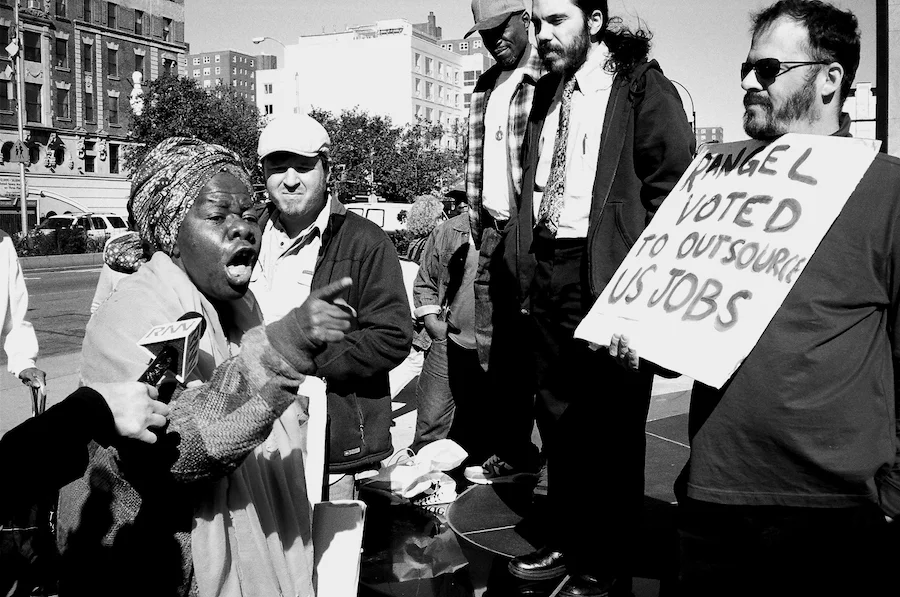Freedom Fighting of Blacks Should Be Documented & Safely Kept

[PHOTO: SHAUN LA]
Written by Shaun La, New York, NY
Blacks protesting for liberation and equality in the United States of America has a foundation deeper than the Civil Rights Movement in the twentieth century. The spirit in protest for blacks trying to liberate themselves can go as far back as the eighteenth century and the Stono Rebellion (1739) to Nate Turner's Rebellion (1831). Both occurring several years after the first photograph was created in France.
As for social media, the speed and convenience of a tweet or a Facebook post extends the struggles as well as solutions for resistance that harken right back to why the Stono Rebellion and Nate Turner's Rebellion happened in the first place.
One could only guess what the photographs and moments recorded would have been like had photographic cameras been at the side of Blacks rebelling against slavery in the United States during the seventeenth century or when slavery was an overt business practice for white U.S. citizens. Would there have been an array of guilt by slave owners and a nation that was building its New World off of the backs of blacks if they fought back? (When the history of photography is dived into, the Civil War treated blacks in their photographs as servants or assistants; this could be credited to both the North’s and the South’s photographs.)
As we see police brutality of blacks being beaten or killed through mobile phone recordings or from photographs that are aimed by professional photojournalists, we still find a rationale as a society to think that the black race did not abide to a code of conduct, patriotically, that dates back to slave owners who were U.S. Presidents and a part of the U.S. Congress.
In 1992, the Los Angeles Riots were heavily covered by the world news. The Ferguson Riots of 2014 and the Baltimore Riots of 2015 had a massive amount of coverage that extended beyond the mainstream press, as social media, blogs, and local media had a greater awareness to what was going on in their communities, because they were not swooping in and out of communities like national/world news tend to do.
The photographs from the Civil Rights Movement was extensive and important. One of the most poignant realities of the Civil Rights being so greatly photographed and covered, would be that it was not that long ago, historically speaking.
Yet, the questions that hover over seeing so many black and brown people protest, fight back, and stand up to institutions that were built from an oppressive, systematic infrastructure would be: Are we less sensitive to seeing and hearing the black voices being just as adamant about freedom?
We could look at one million photographs of the black race being abused, displaced, oppressed, and given the cheapest community investment when it comes to including the black race as U.S. citizens. What could come from this looking? Sad to say, these photographs might receive a response of shock and disgust, even from those who are not racist but benefit from a slave trade past that lifted up the United States into a leading democracy.
However, black people, protesting, fighting the system that oppresses, should continue to be photographed. Mainly because we may have a future Dr. King or Malcolm X that will see the photographs of today as a reason not to let the past be forgotten while the future has ambitions for equality.
